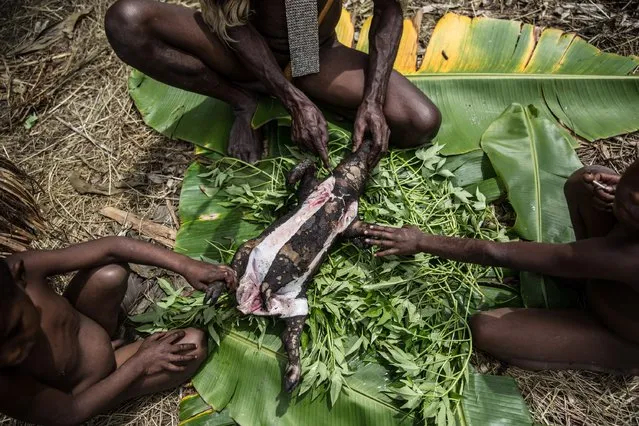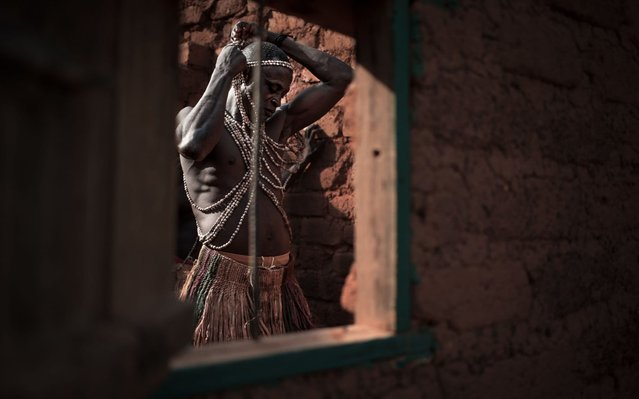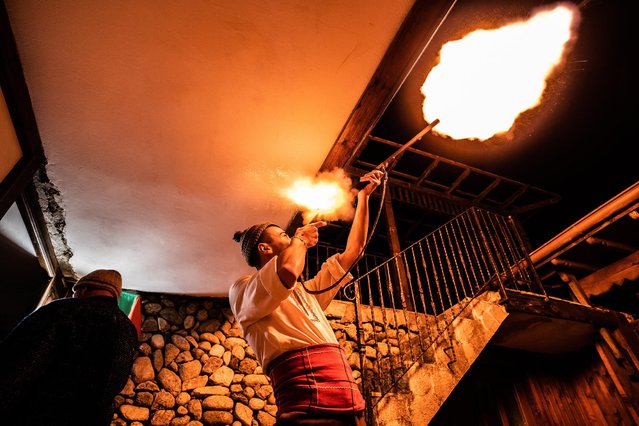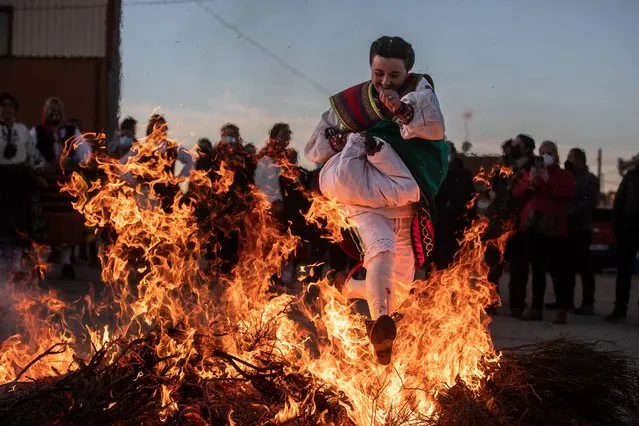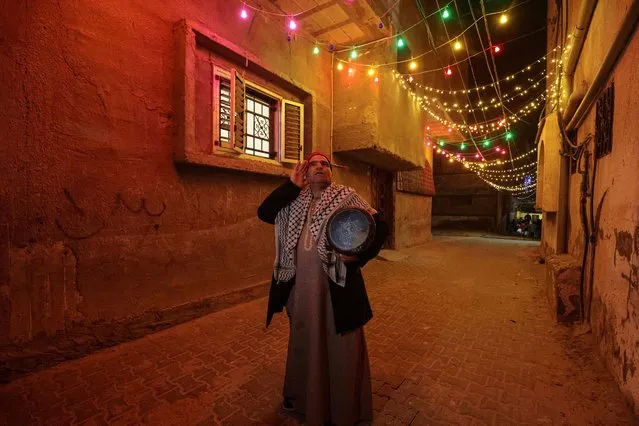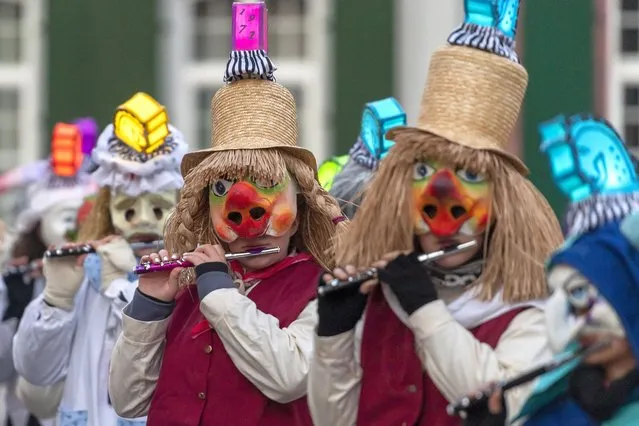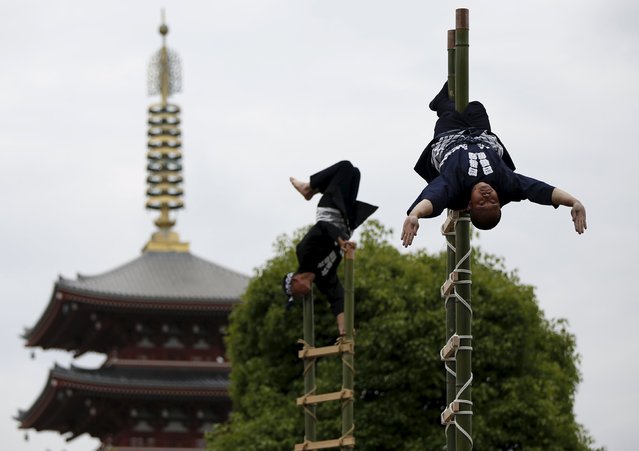
Men wearing costume of traditional firefighters perform acrobatic stunts atop a bamboo ladder following a memorial service for firefighters at Sensoji temple in Tokyo's downtown of Asakusa May 25, 2015. Hundreds of firefighters in traditional costume gathered on Monday for the memorial service for firefighters who were killed performing their duties during the past 300 years. (Photo by Issei Kato/Reuters)
26 May 2015 10:45:00,post received
0 comments

